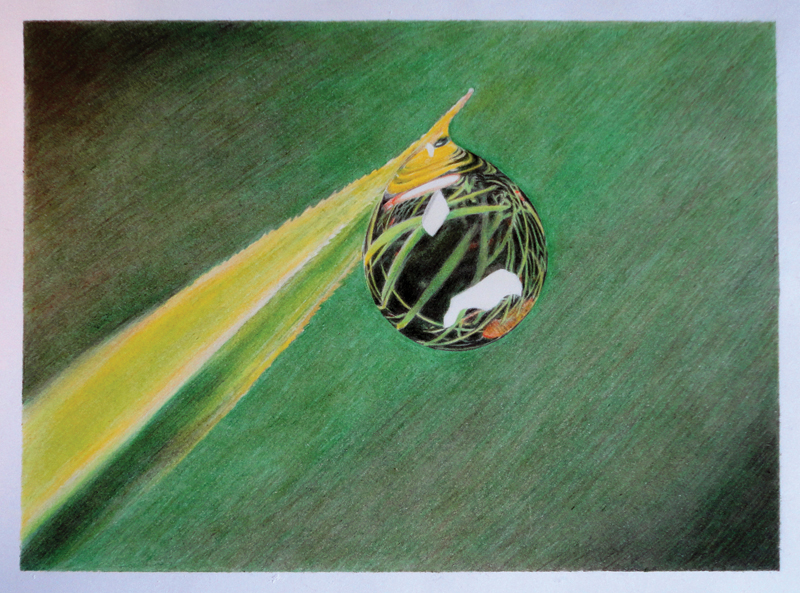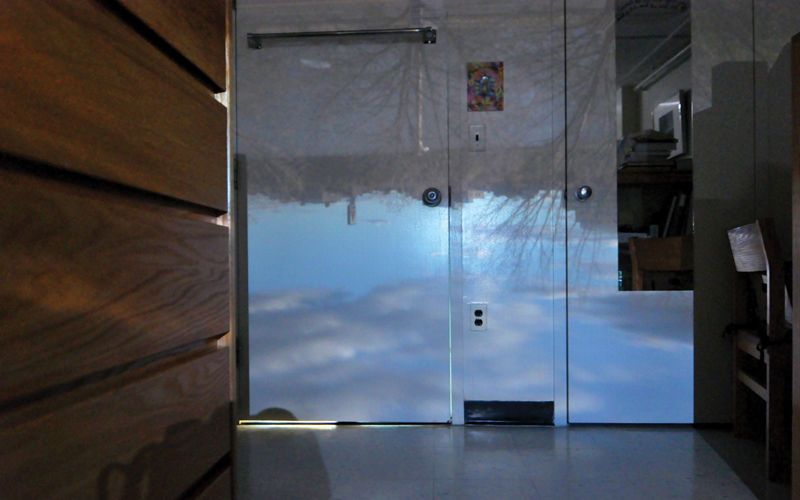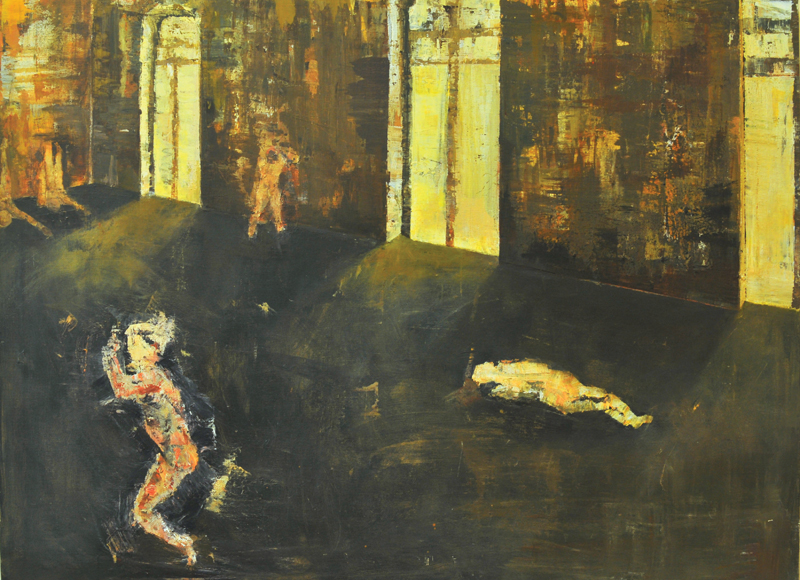PhysCon Art Contest
Spring
2013
Special Feature
PhysCon Awards & Accolades
PhysCon Art Contest
Congress attendees were invited to submit 2- and 3-D works of art for judging or display in Sigma Pi Sigma's second Congress Art Contest. In the next issue of Radiations, we will feature those pieces given “Honorable Mention.” To see larger images of all of the artwork, visit the Congress website at www.spscongress.org/physconprogram/artwork-contest.

Best In Show
Pirouette,
by Glenn Marsch, Grove City College
Ice Faeries seem to spin on the ground on a frigid morning at about 15-18 degrees Fahrenheit. The ice crystals grew radially from tiny sticks projecting out of frozen mud puddles. Optically darker areas of the ground appeared to promote better formation of the crystals. Unlike the more common `frost flowers’ I have seen, these ice formations were not extruded from the sticks, but were true ice crystals that look like hoarfrost, and yet there was no significant frost anywhere else that morning. A model for the development of these elegant ice crystals is that water wicked up by capillary action through these little porous wooden sticks, saturating them. A slight wind might have gently evaporated the water from these sticks and the surrounding mud puddle, and the water then formed ice crystals directly from the vapor phase onto nucleation centers on the twigs.

Artist's Choice & People's Choice
Particle Detection in the Search for New Matter,
A collaboration by Christopher Frye and Emily Daniels, University of Central Florida
Christopher Frye has analyzed data from a particle detector inside the Large Hadron Collider to develop methods of identifying electrons in collisions. His research plays a role in physicists’ search for new particles such as the Higgs boson. Upon collaborating with Christopher and learning about his research, Emily Daniels set out to capture in one piece the numerous aspects that are involved in the physics explorations at the Large Hadron Collider. Drawing from the past, she used an image of the historical bubble chamber detection of particle collisions as a background laying the foundation for modern day experimentation. Shown as a result of the collision is Cerenkov radiation, a process that is critical in the detection of particles in Christopher’s research. Both collaborators aimed to show the event of a collision itself to give a general audience a visual representation of concepts overlooked by many as nothing but abstract formulas and theories.

First Prize: Space & General Science
Water Droplet on a Blade of Grass
(colored pencil drawing),
by Lauren Dallachiesa, Grove City College
A water droplet is hanging from a blade of grass. The sphere-like droplet clings to the tip of the piece of grass. More grass (unseen because of the out of focus background) is reflected in the water. Light passes through the droplet, but refraction causes the light to be bent and the reflected image of the other blades of grass to be bent.

First Prize: Physics for Everyone
Daylight,
by Natalia Guerrero, Massachusetts Institute of Technology
It is sometimes the simplest effect, well-understood for centuries, that creates the most wonder. Rediscovered again and again, the results are each time fascinating not only because they are surprising and beautiful, but also because the individual has found them herself. A mirror, coincidentally angled, projected an image of the outside world onto my dorm room wall, and sparked my curiosity in how light works. I decided to make my room into a camera obscura, literally a “darkened chamber,” covering up my window with posterboard and cutting from it a small aperture. Even though it was the middle of the night, I could see dim lights from the buildings outside my window. I dragged my friends into my room to see the fast-moving lights of cars as they flitted across my walls like shooting stars. As my weekend project evolved in its presentability, I showed them again one afternoon the living pictures projected onto a piece of cardboard and then, a few days later, illuminating a hanging paper screen. I have never been one to hide my enthusiasm for my interests and, with this project, I could share with others my passion and curiosity for this beautiful natural phenomenon.

First Prize: Connecting Worlds
Nothing Going on Here, or So It Seems,
by Jordan Guzman, University of Central Florida
In this piece, I am responding symbolically to the way we interact with the environment, the space and time that surrounds us. Space is often thought of as being far away from us; some think only of outer space. However, current research informs us that is not so. Although we do not fully understand what space is, we are more familiar with it than we realize. In a lonely room, the apparent nothingness imposes itself onto every crevice. Matter and space constantly interact with each other. From moments of stillness to moments of fierce energetic movement, there is more push and pull than we can ever fathom.
